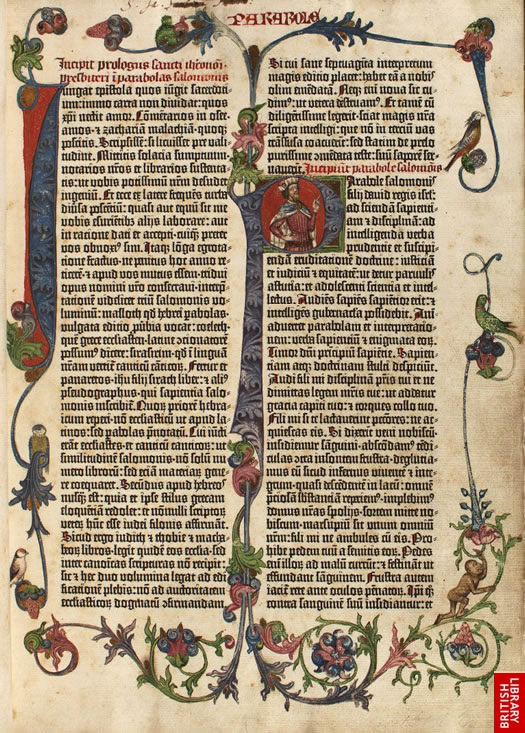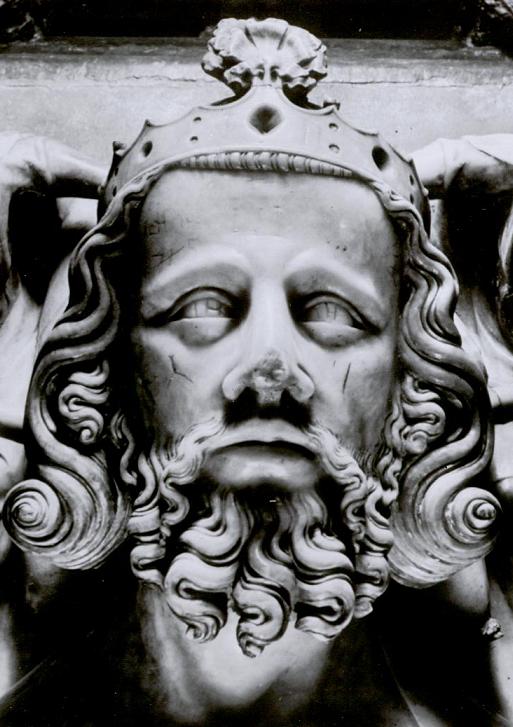The Development of Print Technology
Important Periods in the History of the Book – 15th to 16th Century
 In the Mid-15th Century, things begin to change with the advent of the printing press. In 1452, Gutenberg conceived the idea for movable type. In his workshop, he brings together the technologies of paper, oil-based ink and the wine-press to print books. The printing press is not a single invention. It is the combination in one place of technologies known for centuries before Gutenberg.
In the Mid-15th Century, things begin to change with the advent of the printing press. In 1452, Gutenberg conceived the idea for movable type. In his workshop, he brings together the technologies of paper, oil-based ink and the wine-press to print books. The printing press is not a single invention. It is the combination in one place of technologies known for centuries before Gutenberg.
One thing to remember is that Gutenberg gets credit for an invention that is thought to have been developed simultaneously in Holland and in Prague.
The other inventions brought together by Gutenberg in his pursuit of a printing press were:
- The adaptation for printing, of the wine or olive oil, screw-type press that had been in use for hundreds of years, throughout Europe and Asia.
- The adaptation of block-print technology – known in Europe since the return of Marco Polo from Asia at the end of the 13th century.
- The development of mass production paper-making techniques. Paper was brought from China to Italy in the 12th C. but was thought too flimsy for books.
Prior to the advent of the printing press, books were made of vellum (calf or lamb skin) because of its durability. Vellum is extremely durable. In San Simeon (also known as Hearst’s Castle), there are lampshades that William Randolph Hearst had made from 15th century Gregorian prayer books and the vellum is still in excellent condition. For books that took more than a year to produce, paper was too flimsy.
However, for print books, vellum was too costly to produce.
- The development of oil-based inks. These had been around since the 10th century, but smeared on the vellum used to make books. The religious manuscripts used an egg-based tempera. This was unsuitable for printing with type.
- Gutenberg’s contribution to printing was the development of a punch and mould system which allowed the mass production of the movable type used to reproduce a page of text. These letters would be put together in a type tray which was then used to print a page of text. If a letter broke down, it could be replaced. When the printing of the copies of one page was finished, the type could be reused for the next page or the next book.
These technological improvements stretch across five centuries. They do not cluster around Gutenberg’s time.
However, the advent of the printing press did not bring about a great shift in the social organization of learning in Europe.
The first books to show up in print shops were bibles and religious tracts. The next books to attract publishers were the humanist texts brought back from Byzantium by the Crusaders and other texts of antiquity but there was little or no printing of new ideas.
Many people went into the printing business and went right back out again. The reason was that the distribution of books was poorly organized. The market was there, and the potential for filling the demand but the transport, control and advertising mechanisms were not in place.
In addition, there was still a low literacy rate in Europe. Most people did not know how to read at all. Non-literates were still affected by the book trade because the elites, who controlled society, were affected by books. People who could not read still had access to book culture because there were travellers who stood in the market and read from books as a means of making a living as entertainers.
The situation was improved by the introduction of the Frankfort Book Faire. Cities in Europe held yearly fairs, featuring whatever kinds of things the city and surrounding area was good at producing. (The county fair of today is the descendant of these early commerce fairs).
Frankfort was an early centre for printing and so it sponsored a book fair which drew publishers, booksellers, collectors and scholars who could find what they needed for their livelihoods. This helped coordinate supply and demand.
The fair also produced a catalogue of all the works shown at the fair – an early Books in Print.
None of this is to say that new book printing posed much of a challenge to the power and prestige of the church.
Early print books were conservative in content and filled with medieval images and ideas.
The printed book quickly becomes a regular object in the world. By 1501 there were 1000 printing shops in Europe, which had produced 35,000 titles and 20 million copies.











